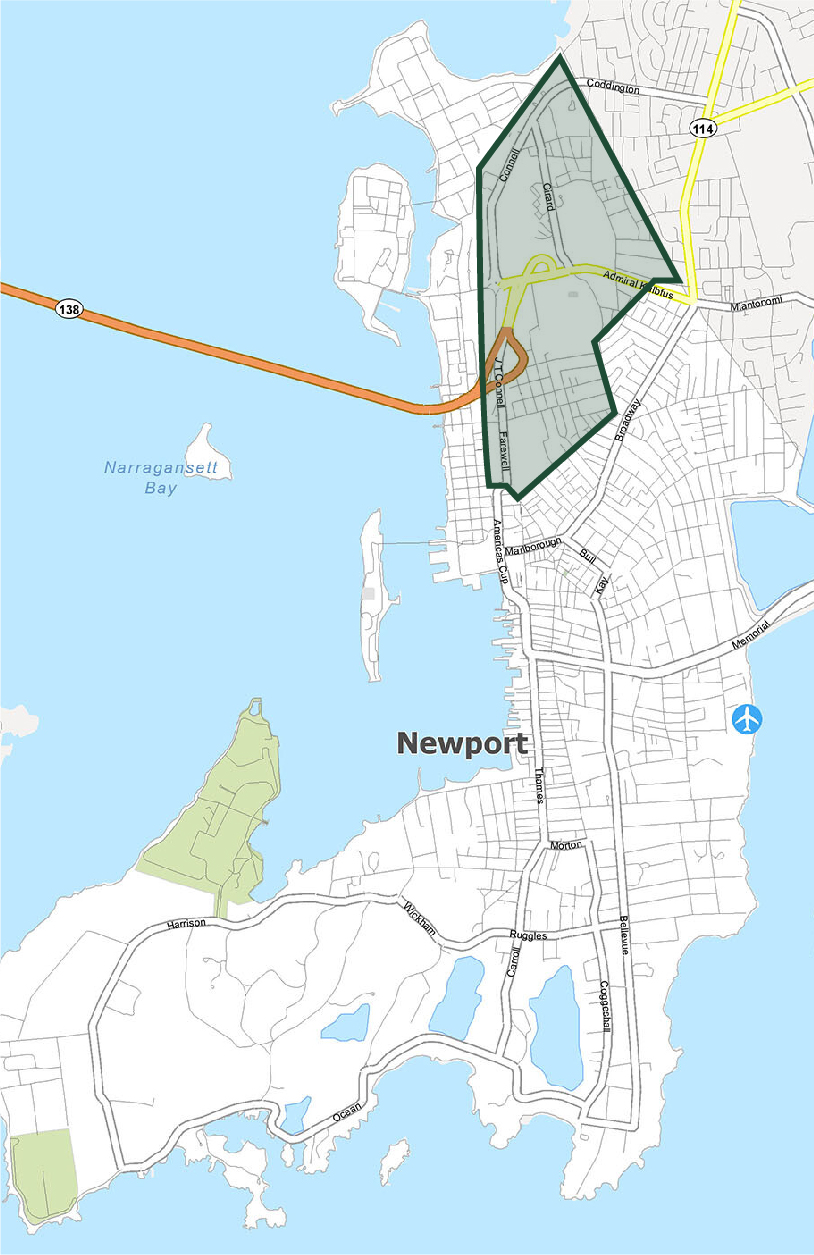Health and Housing Toolkit
- Making the Case: Learning enough about the other sector to make a strategic pitch. In this section, you will learn about the different stakeholders in each sector and the values and goals that will ground the partnership in the work ahead.
- Making it Happen: Once values have been aligned and joint goals are agreed upon, partners work together to define each unique health and housing partnership activity. This section provides examples of such collaborations from health and housing projects nationwide.
- Making it Work: Once partners and project(s) have been decided upon, the operational tasks must be executed in a collaborative manner across sectors. While the details will differ from project to project, this toolkit provides an example of developing single-site supportive housing as one example of such a partnership. Using the tools listed in the toolkit, these details could be developed to this level of specificity to ensure success.
- Making it Last: Ensuring that the vision is executed and sustained. In the final section, financial sustainability and partners’ support for this mission become crucial.
Making the Case
Health Sector Partners
The entire healthcare sector is estimated to be 20% of our national economy. A sector this vast has a variety of different subsectors within it, each with its own mission, priorities, and financial incentives. However, two overarching bottom- lines are consistent throughout: (1) to improve health and health outcomes, and (2) to reduce cost. The health sector also has its own subset of philanthropic organizations that invest in projects to improve health or otherwise achieve their missions in the communities they prioritize.
Health sector partners include: Managed Care, Hospital and Health Systems, Community Health Centers, Community Mental Health and Substance Abuse Providers, Accountable Entities and Public Health.
Housing Sector Partners
The housing sector is extensive, comprising various subsectors with roles in building thriving communities. Key systems, leaders, and funders provide financing, capacity, and expertise for development and operation, excluding private developers and financing entities.
The sector’s primary goal is to ensure affordable housing for all community members and thriving communities. For supportive housing units, appropriate tenant services are essential. Early engagement with service providers ensures budgets are accurate and service needs are met in project planning
Housing Sector Partners include: RIHousing, Public Housing Authority (PHA) and Continuum of Care (CoC).
At the start of any partnership, it is important to align values and establish shared goals. In order to do so, partners must understand how each respective sector works.
Recommendation to Make It Happen
Once you have gained a better understanding of who the health and housing partners are, it is important to understand the populations served and the level of collaboration required to meet their needs through focusing on data. Key recommendations include utilizing the state data ecosystem, coordinating data-sharing and focusing on equity as a driver.
Making it Happen
Determine your primary needs and goals that the partnership could fulfill. CSH’s Partnership Assessment Tool helps evaluate alignment between housing and health sector partners, ensuring strategic compatibility. Use this tool before committing significant resources to ensure alignment of values, mission, and goals. The tool guides you in assessing your agency’s capacity to achieve its goals through a health and housing partnership by answering questions about your mission, goals, resources, services, and readiness to partner.
Understanding your health sector partners: Priorities and Incentives
RIHousing and the Executive Office of Health and Human Services (EOHHS) share values and complementary statewide goals, such as ending homelessness and improving health equity. With these commonalities, they aim to develop a shared policy agenda to foster a strategic, integrated partnership. This includes leveraging the unique expertise and resources of various health sector partners to align health and housing systems. Managed Care Organizations (MCOs) play a crucial role in ensuring health services for low-income individuals, complying with Medicaid regulations, and addressing health disparities, while hospitals, health systems, community health centers, and behavioral health clinics bring their respective expertise and resources to improve health outcomes and support community needs.
Each health sector partner group, including Accountable Entities and public health departments, has distinct priorities and resources that contribute to supportive housing development. Managed Care often involves charitable arms for community health projects, while hospitals must meet IRS community benefit requirements. Federally Qualified Health Centers (FQHCs) provide care to low-income populations, and Community Mental Health Centers focus on behavioral health services. Public health initiatives like Rhode Island’s Health Equity Zone Initiative address social determinants of health (SDOH) through community-led solutions. By understanding these entities and fostering strong partnerships, Rhode Island can develop supportive housing and achieve larger state goals through collaborative efforts.
Understanding the housing sector: Priorities and Incentives
Supportive housing addresses multiple community challenges, including homelessness, aging populations needing integrated housing and services, institutional transitions, and family stabilization in child welfare cases. It also has the potential to promote health equity, particularly for Black, Indigenous, and People of Color (BIPOC) who are disproportionately affected by homelessness. To achieve these goals, understanding and partnering with various housing system stakeholders, such as Community Development Financial Institutions (CDFIs), lenders, Community Development Corporations (CDCs), developers, property management companies, investors, and service providers, is crucial. Each of these partners brings unique resources and expertise to the table, enabling the development of effective, quality, and equitable supportive housing solutions.
To foster these partnerships, it is important to approach potential partners thoughtfully, taking into account their priorities, skills, and resources. This involves engaging in one-on-one meetings, multi-organizational meetings, community convenings, and possibly third-party facilitation. Assessing and selecting partners through a thorough vetting process ensures alignment of values, goals, and capacities. Tools such as the Qualified Allocation Plan (QAP) can incentivize developers to include supportive housing units in their projects. Effective partnerships require clear vision and goals, structured planning, and overcoming barriers to create seamless systems addressing community needs comprehensively. By working together, health and housing sectors can strategically address gaps and enhance supportive housing initiatives.
Health and housing partnership examples and potential for Rhode Island
Each component of the health sector brings unique expertise, capacity, and resources to their work aligning health and housing systems. High-level drivers like equity and shared advocacy are integral to all efforts. Specific and strategic partnerships are crucial for initiating, implementing, and sustaining these efforts.
Shared advocacy across health and housing sectors can strengthen legislative agendas and community efforts. Engaging the right people, such as champions or a guiding coalition, is essential for planning and implementing new systems or services. This team should include leadership, key decision-makers, frontline staff, and clients to ensure success. Regular communication and stakeholder feedback through focus groups, community forums, and surveys are important. Creating a shared vision through planning meetings helps align partners on the partnership’s value. Determining the partnership type, from referrals to service integration and co-location, sets the structure and boundaries of collaboration, ensuring it meets primary needs and adheres to necessary program designations.
Making it Work
To successfully launch the partnership, it is beneficial to pilot the project on a smaller scale to identify operational challenges, assess effective processes, and evaluate performance before full-scale implementation. Piloting can also attract unique funding opportunities and demonstrate proof of concept to stakeholders. Incorporating short-term, achievable goals within the partnership plan allows for celebrating successes, building trust, and reinforcing commitment. Examples of fostering engagement include drafting new operational policies, holding informational meetings, highlighting success stories, and conducting program reviews. Achieving short-term goals motivates partners, increases momentum, and can attract additional funding for long-term operations, ultimately communicating the partnership’s impact to internal and external stakeholders to show overall program impact and reinforcement of the partnership value to expand impact.
Making it Last
Flexibility is paramount in navigating the complexities of partnership dynamics. Adapting to leadership changes, funding fluctuations, and evolving operational landscapes ensures resilience and sustainability. Anticipating future shifts through strategic planning and data-driven insights allows partners to proactively align their goals and initiatives with emerging opportunities, such as Medicaid expansions for supportive housing services. Understanding and adhering to data management regulations, including privacy laws, are crucial for maintaining trust and compliance. Successful partnerships thrive on ongoing engagement, adaptive strategies, and a shared commitment to addressing community needs effectively over the long term.
Resources
Below are resources mentioned throughout the Toolkit.
- List of Acronyms
- Partnership Assessment Tool
- Partnership Assessment Tool Guidance
- More info on CDFIs
- Tenant Selection Plan (TSP) Template
- Emerging Practices In Inclusive Tenant Screening
- QAP Resource Guide for Incentivizing Supportive Housing
- Sample Agreement: Memorandum of Understanding (MOU) Regarding Integrated Services
- Detailed Overview of Housing Development and Financing
- Case Study: Details on McCauley House Atlanta
- Leveraging LIHTC to Support Thriving Communities
About the Health and Housing Toolkit
This toolkit was developed by Corporation for Supportive Housing (CSH) in partnership with RIHousing.
RIHousing, looking to grow health and housing partnerships, was awarded a Robert Wood Johnson Foundation Healthy Housing, Health Communities Partnerships (HC3) grant to help states leverage their role in the affordable housing industry and attract significant health system investment while elevating community level leadership in addressing the housing affordability in America. RIHousing created this toolkit for Rhode Island healthcare entities to partner with housing developers, owners, and property managers (“housing entities”) to integrate healthcare and supportive services into affordable housing. This toolkit is the final component of the HC3 Initiative.
View RIHousing’s Healthy Housing, Healthy Communities (H3C) Plan here >

